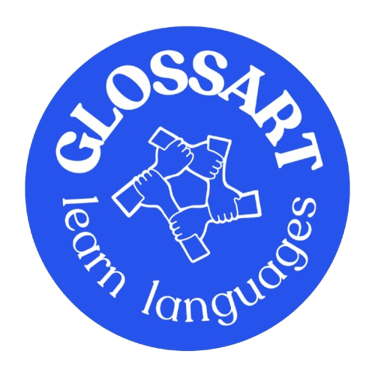Transform Your World with Language Learning at GlossArt Languages!
The Language Highway: How Your Brain Shapes and Speaks Meaning
Every word you speak travels across a hidden bridge in your brain where thought becomes sound and sound becomes meaning. This article explores the secret language of Broca’s and Wernicke’s areas, and how every new language reshapes the very structure of who you are.
Evangelia Perifanou
11/4/20252 min read


The Language Highway: Where the Brain Meets the Word
There’s a secret choreography inside your brain every time you speak.
A symphony of impulses travels through microscopic paths meaning becomes sound, thought becomes rhythm, silence becomes language.
Deep in this invisible architecture lie two of humanity’s most extraordinary creations: Broca’s area and Wernicke’s area , the architects of communication.
Broca’s Area — The Sculptor of Thought
Situated in the left frontal lobe, Broca’s area is where thought learns to take shape.
It arranges ideas into form , a grammar of intention.
It decides how to speak, when to pause, and why to choose one word over another.
When Broca’s area falters, comprehension remains but the bridge to expression collapses. Words hide behind meaning trapped, like music that can be heard internally but never played.
Wernicke’s Area — The Listener of Meaning
In the temporal lobe, Wernicke’s area listens not only to sound but to sense.
It decodes, anticipates, and reconstructs. It gives life to the abstract pulse of language, allowing you to understand before you realize you’ve understood.
When this area fails, words still flow, but their essence dissolves like a river that carries only sound, not sense.
The Arcuate Fasciculus — The Bridge Between Thought and Voice
Between these two territories runs the arcuate fasciculus a slender bundle of white matter that connects comprehension to expression.
It is the neural bridge of dialogue.
Every sentence, every translation, every conversation you’ve ever had crosses this silent corridor.
It’s the thread that turns inner speech into shared reality.
The Multilingual Brain — A Symphony of Highways
For those who live between languages, this bridge becomes not one but many.
Each language you learn reconfigures your neural map a new rhythm of thought, a new route for meaning to travel.
In multilinguals, regions around the parietal vertex and prefrontal cortex take on an even greater role:
They orchestrate switching, inhibition, and integration across tongues.
They hold multiple grammars at once like overlapping melodies played in perfect harmony.
They allow you to think in one language and feel in another.
Science calls it neural plasticity.
But maybe it’s closer to poetry the mind’s ability to expand its own architecture.
Learning Languages: Building New Neural Bridges
When you repeat a phrase, when you listen deeply, when you struggle to find the perfect word , you’re literally reshaping your brain.
Broca’s area grows stronger with every act of speaking and writing.
Wernicke’s area refines itself with listening, reading, and understanding nuance.
The arcuate fasciculus becomes denser , faster, more connected each time you move from comprehension to creation.
Language learning is not about memorizing words;
it’s about training your brain to dance between silence and sound
to translate electricity into emotion.
Inside every learner, there’s a microcosm of evolution the primal urge to communicate refined through the architecture of the cortex.
To speak another language is to build a new version of yourself:
one that thinks differently, feels differently, and connects more deeply.
Your brain doesn’t just learn languages.
It becomes them.
#GlossartLanguages #NeuroscienceOfLanguage #BilingualMind #LanguageAndConsciousness #BrocasArea #WernickesArea #ArcuateFasciculus #LanguagePhilosophy #MultilingualBrain #LanguageLearningJourney #MindAndLanguage #LanguageIsConnection #PolyglotMind #CognitiveScience #LearnLanguages #BrainAndWord #LinguisticIdentity #Neuroplasticity #LanguageTeacher #LanguageLovers


